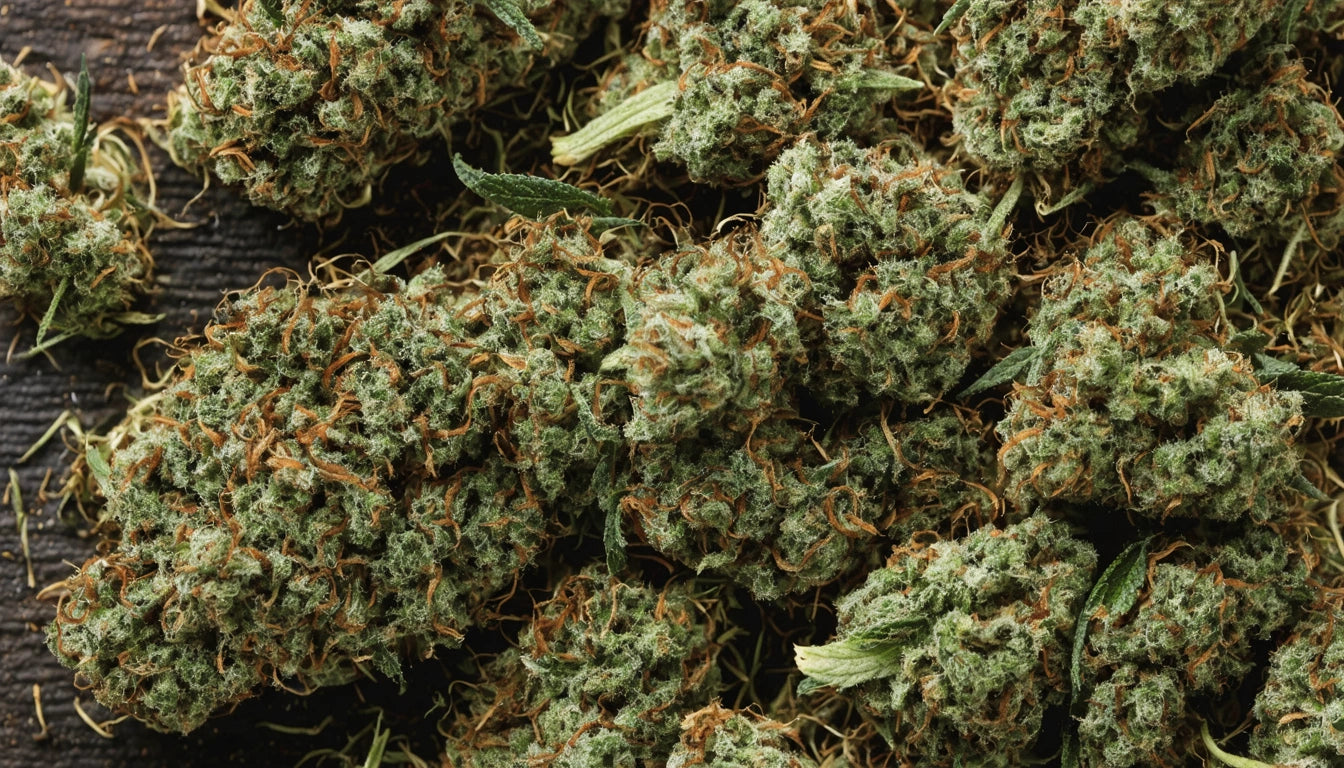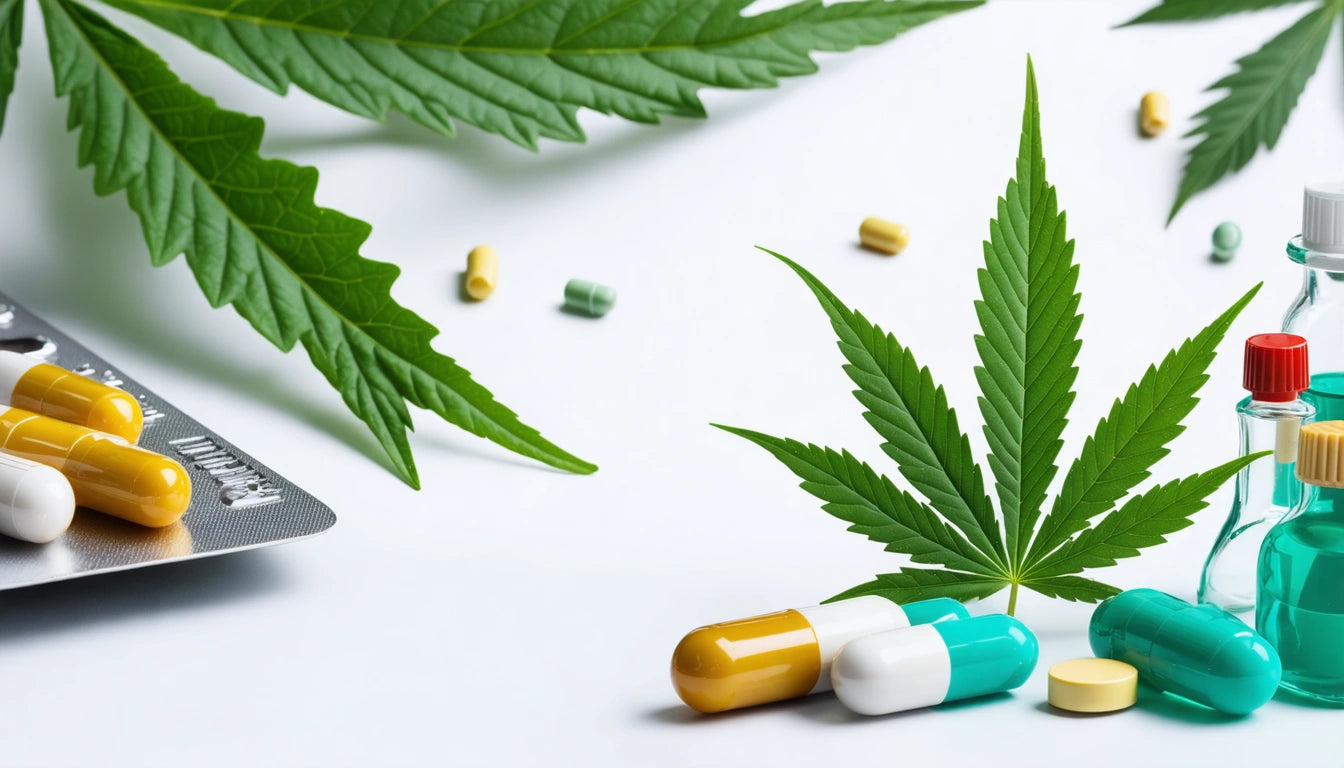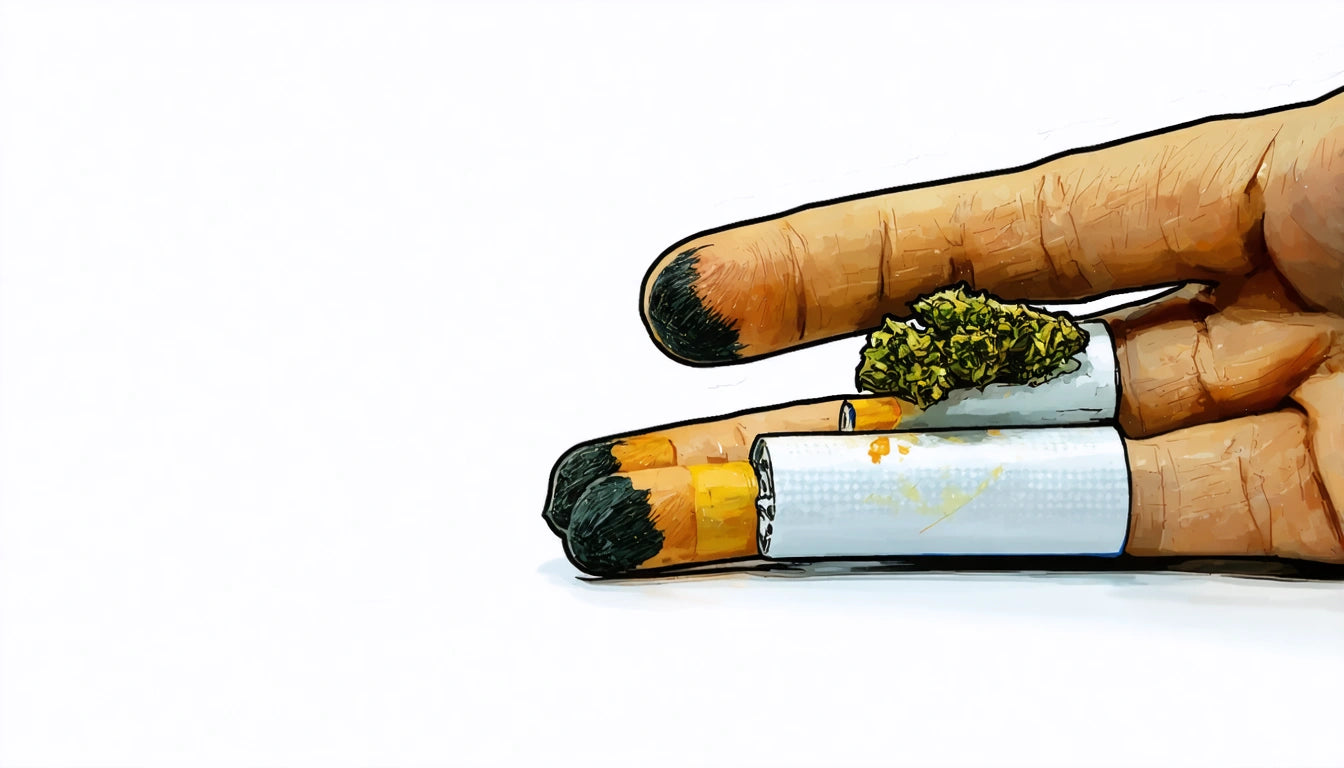Table of Contents
How to Identify Mold on Cannabis: A Visual Guide
Identifying mold on cannabis is crucial for both consumers and cultivators. Moldy weed poses serious health risks and can ruin entire harvests or personal stashes. This comprehensive guide will help you understand what mold on weed looks like, how to identify different types of cannabis mold, and what steps to take if you discover it.
Common Types of Cannabis Mold
Several types of mold can affect cannabis plants and dried flower. Each has distinct characteristics that help with identification:
Powdery Mildew
One of the most common cannabis molds, powdery mildew appears as a white or gray powdery substance on the leaves and buds. It resembles a dusting of flour or confectioner's sugar and typically starts on the leaves before spreading to the buds.
Botrytis (Bud Rot)
Bud rot typically starts inside the densest parts of the cannabis flower and works its way outward. Understanding the differences between bud rot and other molds is essential for proper identification. It appears as gray or brown areas with a slimy texture that eventually dries into a dusty, gray mass.
Aspergillus
Aspergillus mold can be particularly dangerous to consume. It often appears as green, black, or gray spots on cannabis buds. This type of mold is especially concerning because it can produce mycotoxins that cause serious respiratory issues.
Visual Identification of Mold on Cannabis
Knowing what mold looks like on weed requires attention to detail. Here are the visual indicators to watch for:
Color Changes
Healthy cannabis should maintain consistent coloration. If you notice unusual white, gray, black, or blue-green patches that weren't previously there, this could indicate mold growth. These discolorations often contrast sharply with the natural green of the plant or the specific coloration of the strain.
Unusual Textures
What does moldy weed look like in terms of texture? Mold often creates a fuzzy, velvet-like, or powdery texture that differs from the crystalline appearance of trichomes. While trichomes (the resin glands that contain cannabinoids) look like tiny clear or amber mushrooms under magnification, mold appears as intertwined threads or a powdery substance.
Web-Like Structures
Some molds create visible web-like structures between parts of the bud or across the surface of leaves. These fine threads (mycelium) are how the mold spreads and are a definitive sign of contamination.
For a deeper understanding of what cannabis should look like when healthy, this comprehensive guide to identifying cannabis provides excellent reference points.
Beyond Visual Signs: Other Ways to Detect Mold
Visual inspection is just one method for identifying moldy cannabis. Other senses can help detect mold before it becomes visible:
Smell Test
What does mold on pot plants smell like? Moldy cannabis typically has a distinct musty, damp basement smell. If your cannabis smells like hay, ammonia, or urine instead of its characteristic aroma, this could indicate mold or improper curing. Understanding the unique scents of cannabis can help you distinguish between normal aromas and those indicating contamination.
Breaking Apart the Bud
Sometimes mold begins growing inside dense buds. Gently breaking open a bud can reveal hidden mold that wasn't visible on the surface. If the inside of the bud has an off-color or unusual texture compared to the outside, this could indicate internal mold growth.
Health Risks of Consuming Moldy Weed
Understanding the risks associated with moldy cannabis underscores the importance of proper identification:
- Respiratory infections, especially dangerous for immunocompromised individuals
- Allergic reactions ranging from mild to severe
- Lung inflammation and exacerbation of existing conditions like asthma
- Exposure to mycotoxins, which can cause long-term health issues
- Headaches, nausea, and other immediate symptoms
For more detailed information on the risks and prevention strategies, this guide on moldy weed identification and risks provides valuable insights.
Prevention and Storage Solutions
Preventing mold growth begins with proper storage and environmental control:
Humidity Control
Cannabis should be stored at a relative humidity between 59% and 63% to prevent mold while maintaining quality. We recommend using humidity control packs designed specifically for cannabis storage to maintain optimal conditions and prevent both mold growth and over-drying.
Proper Containers
Store cannabis in airtight containers made of glass or medical-grade plastic. These containers should be kept in a cool, dark place to prevent light degradation and temperature fluctuations that can lead to condensation and mold growth.
Regular Inspection
Periodically inspect your stored cannabis for early signs of mold. Early detection can prevent contamination of your entire supply and reduce health risks.
If you're a cultivator dealing with mold issues, these effective ways to eliminate mold from cannabis plants and buds can help save your harvest.
What to Do If You Find Mold on Your Cannabis
If you discover what looks like mold on your weed, take these steps:
- Isolate the affected cannabis immediately to prevent cross-contamination
- Examine all cannabis from the same source or storage container
- Do not attempt to salvage moldy cannabis by cutting away affected areas, as mold spores are microscopic and likely present throughout
- Dispose of moldy cannabis properly, away from other plant material
- Clean storage containers thoroughly before reusing them
- Review your storage methods to prevent future occurrences
For consumers, the safest approach is to discard any cannabis with signs of mold. The health risks outweigh any potential benefits of attempting to salvage contaminated product. For cultivators, addressing the environmental conditions that led to mold development is crucial for preventing future crop losses.
By understanding what mold on weed looks like and implementing proper storage practices, you can protect your health and investment while enjoying cannabis safely.











Leave a comment
All comments are moderated before being published.
This site is protected by hCaptcha and the hCaptcha Privacy Policy and Terms of Service apply.